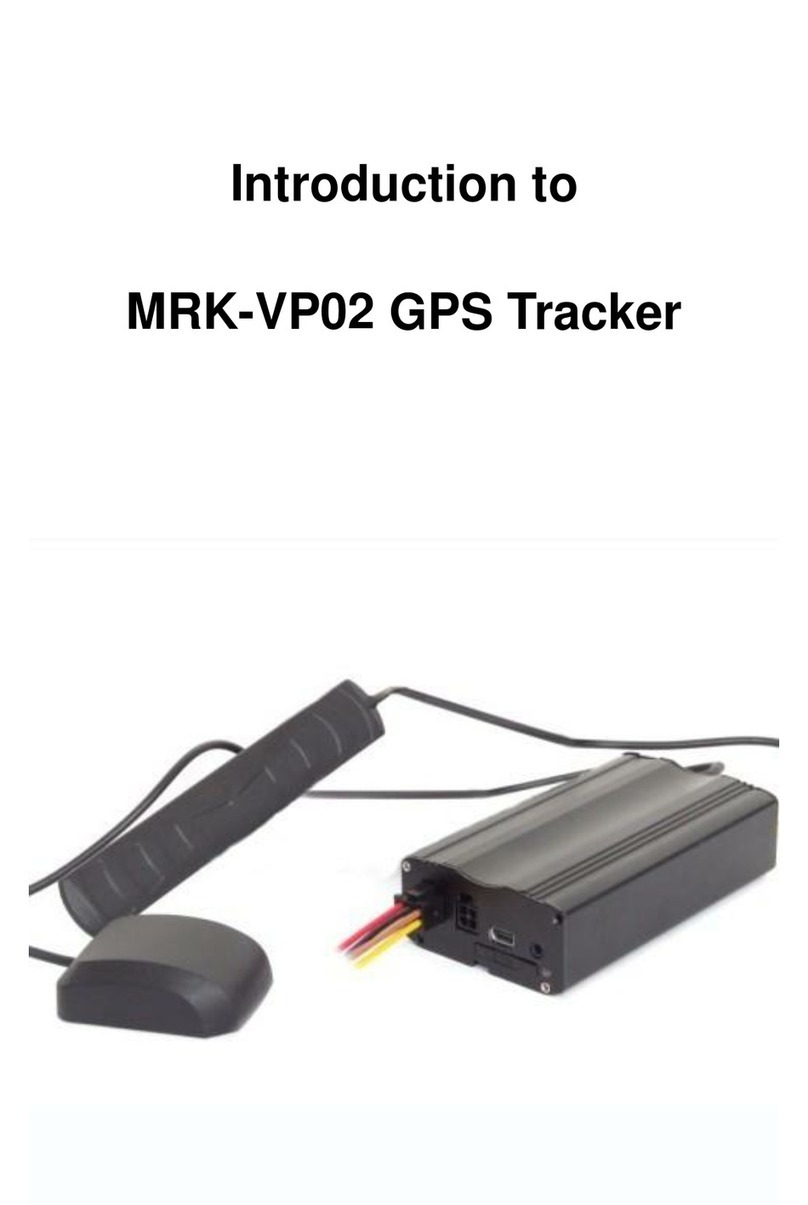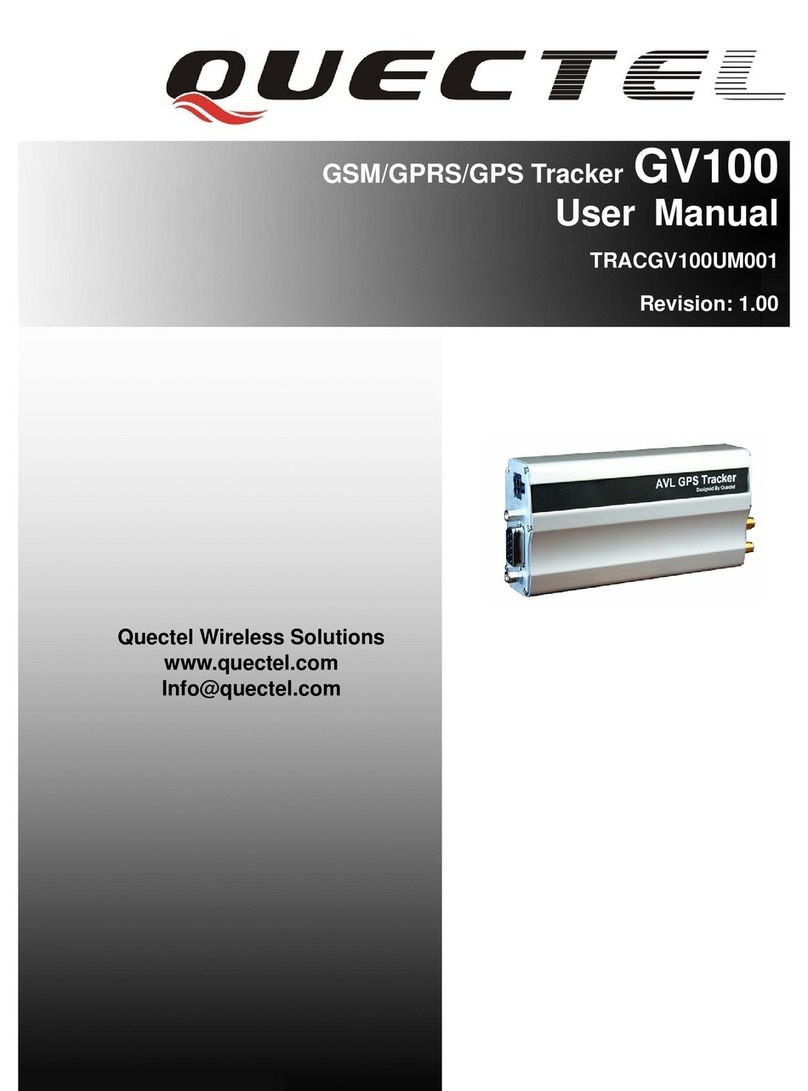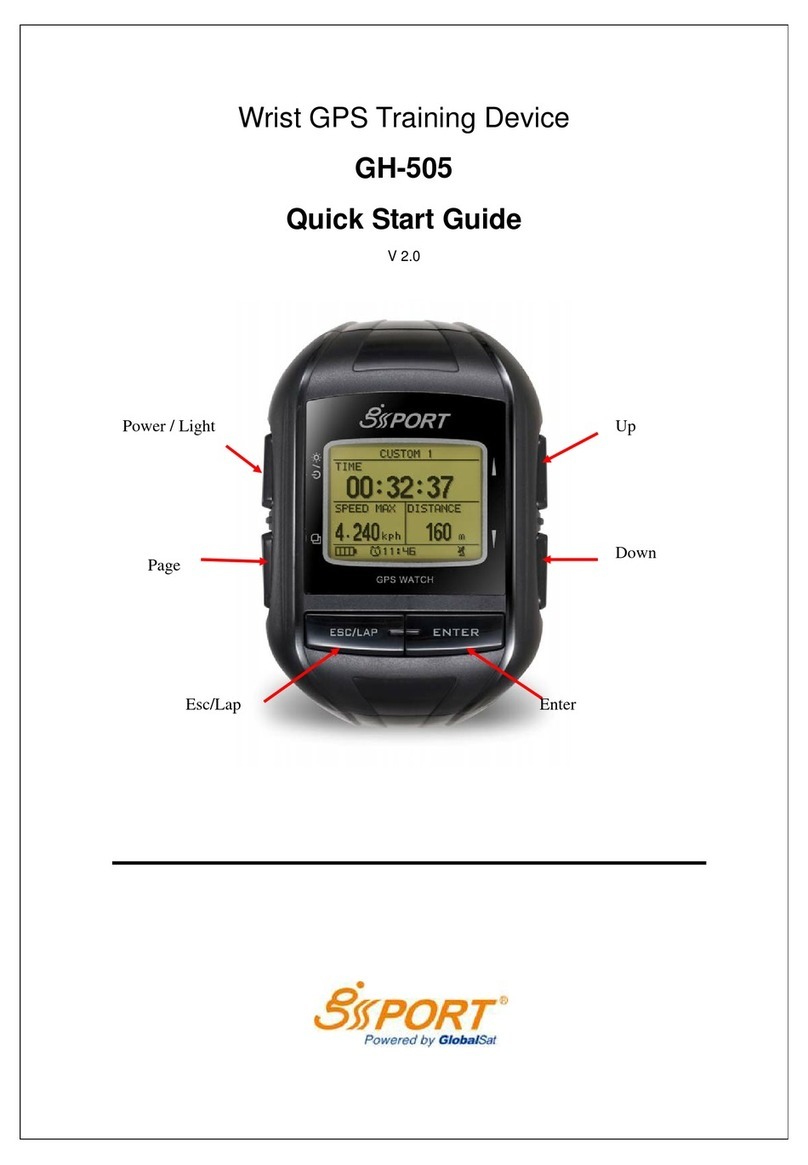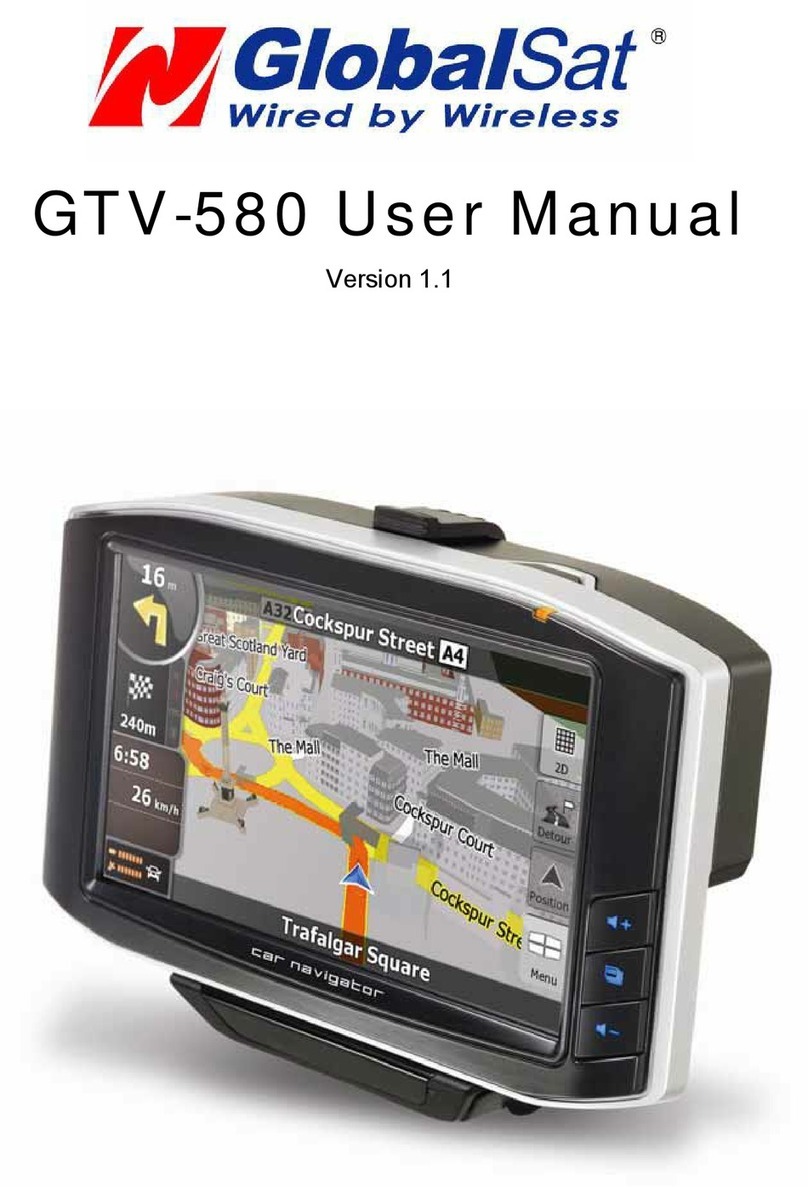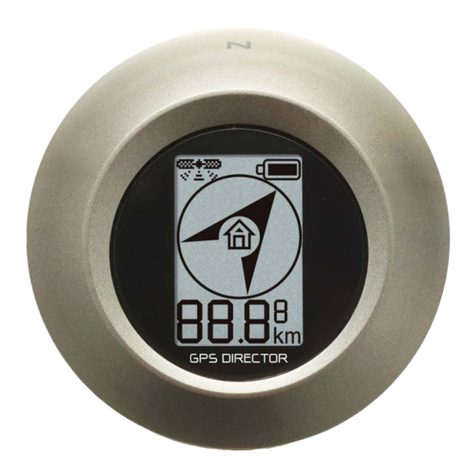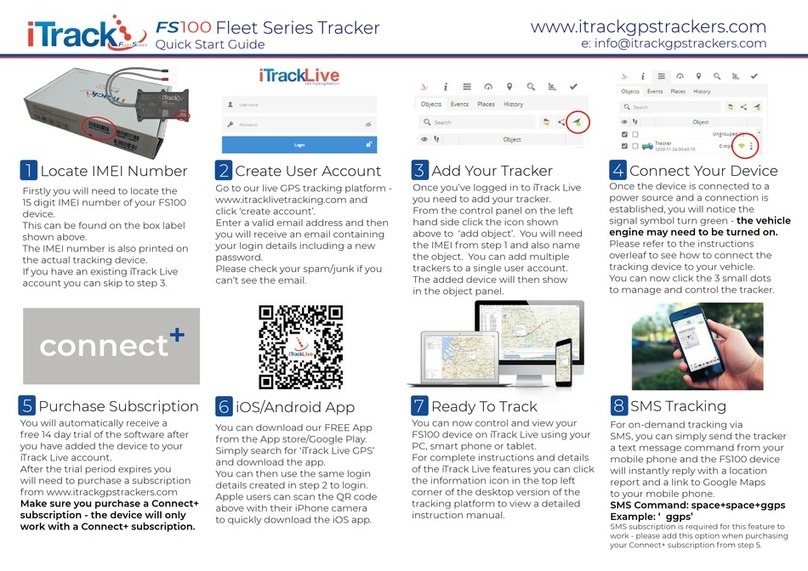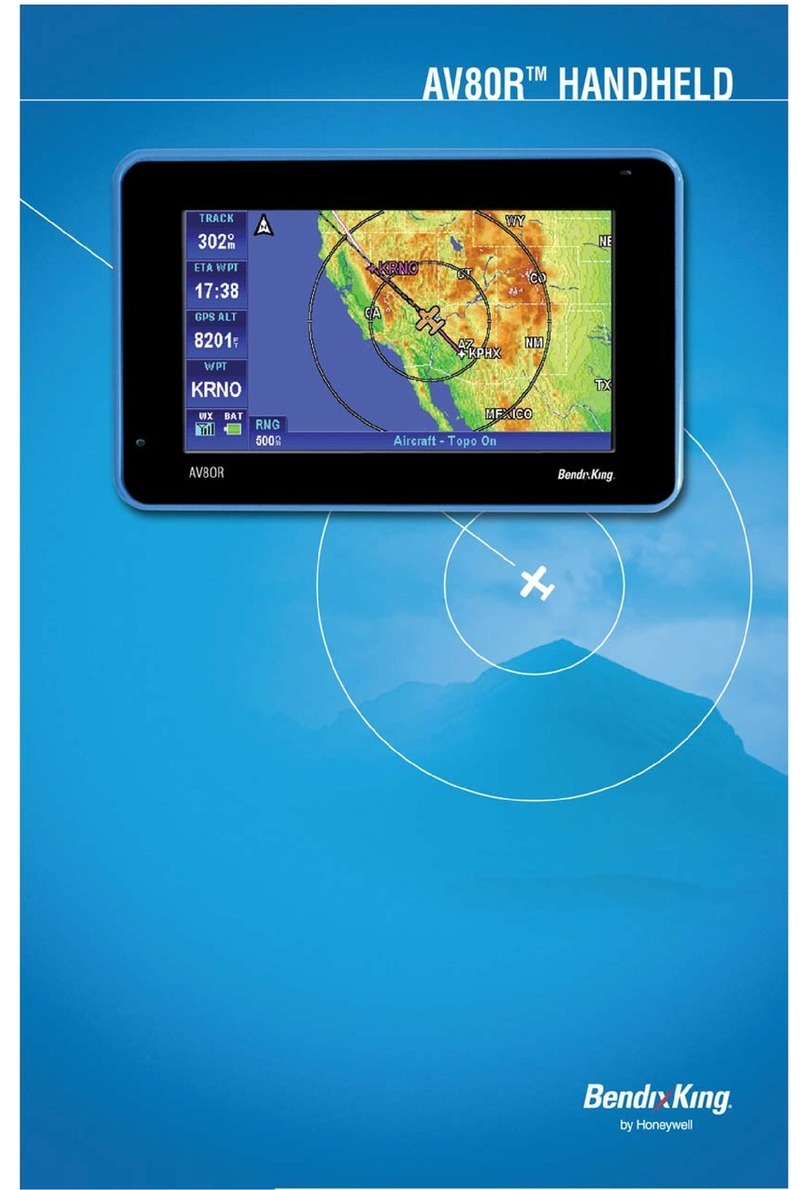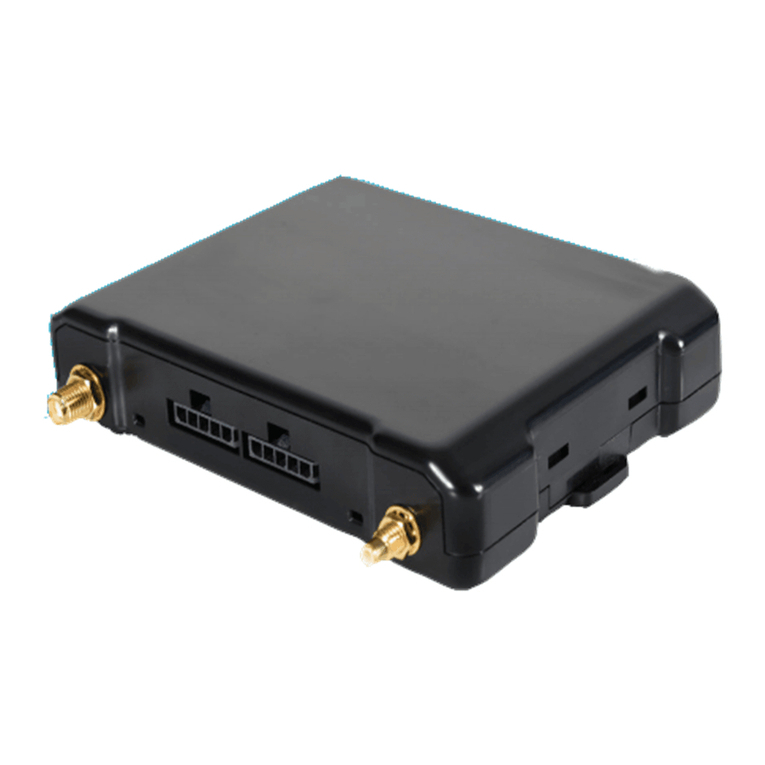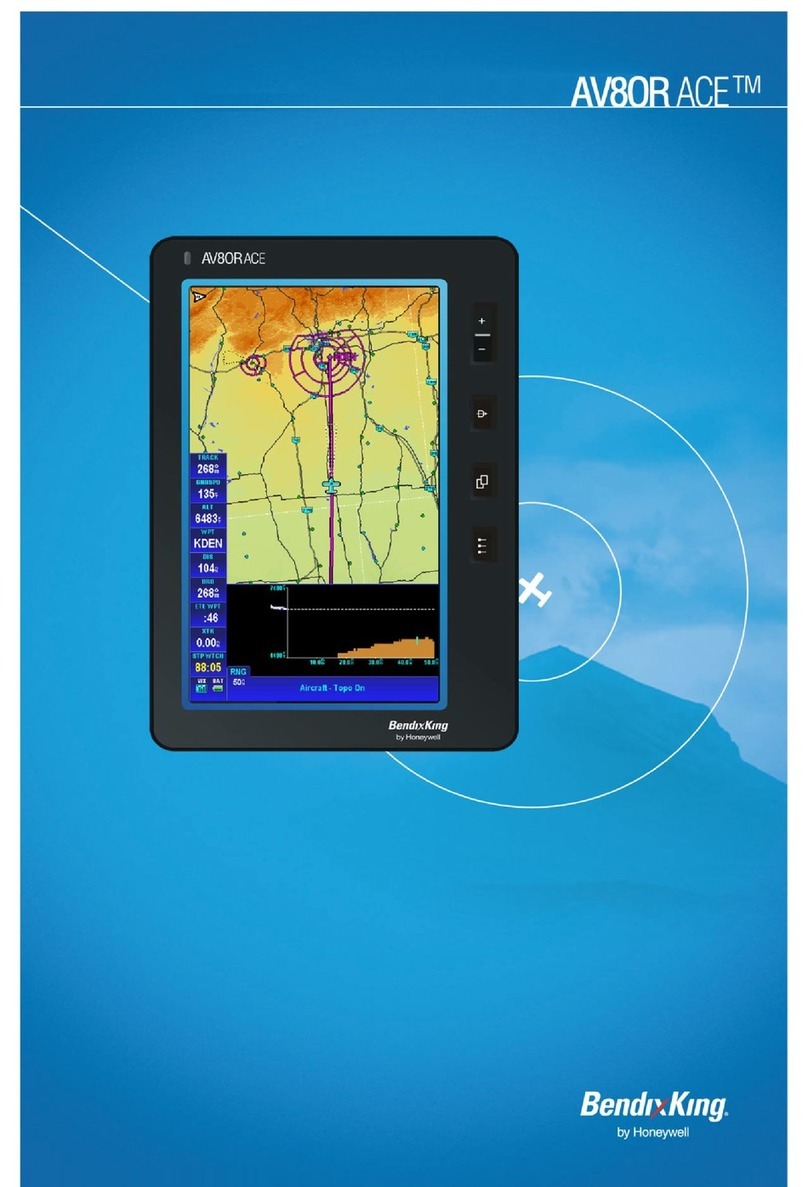MT-Propeller MTV-28-2 Series Instruction Manual

ATA 61-07-19
(E-3719)
OPERATION- AND INSTALLATION AND MAINTENANCE
MANUAL
REVERSIBLE HYDRAULICALLY CONTROLLED
VARIABLE PITCH PROPELLER
MTV-28-2-( )-R(H)
Release date: December 10th, 2020
DE.21G.0008
EASA.21J.020

Page 1 Initial Revision 2020-12-10
ATA 61-07-19
Warning
People who operate a hovercraft should recognize that various types of risks are involved; and they
should take all precautions to minimize them, since they cannot be eliminated entirely. The propeller is
a vital component of the hovercraft. A mechanical failure could cause a failure in operation or create
vibrations sufficiently severe to damage the hovercraft.
Propellers are subject to constant vibration stresses from the engine and airstream, which are added to
high bending and centrifugal stresses.
Before a propeller is classified as being safe to operate, an adequate margin of safety must be
demonstrated. Even though every precaution is taken in the design and manufacture of a propeller,
history has revealed rare instances of failures, particularly of the fatigue type.
It is essential that the propeller be properly maintained according to the recommended service
procedures and a close watch be exercised to detect impending problems before they become
serious. Any grease leakage or oil leakage, unusual vibration, or unusual operation should be
investigated and repaired as it could be a warning that something serious is wrong.
As a fellow pilot, I urge you to read this manual thoroughly; it contains a wealth of information about
your new propeller.
The propeller is among the most reliable components of your hovercraft. It is also among the most
critical to operation safety. It therefore deserves the care and maintenance called for in this manual.
Please give it your attention, especially the section dealing with inspections and checks.
Thank you for choosing a MT-Propeller. Properly maintained it will give you many years of reliable
service.
Gerd R. Mühlbauer
President
MT-Propeller Entwicklung GmbH

Page 2 Initial Revision 2020-12-10
ATA 61-07-19
OPERATION AND INSTALLATION MANUAL
FOR
REVERSIBLE HYDRAULICALLY CONTROLLED VARIABLE PITCH PROPELLER
MTV-28-2-AZ-R(H)
Table of contents
Table of contents ...................................................................................................................................................... 2
List of effective pages .................................................................................................................................................. 3
List of revisions............................................................................................................................................................. 4
1. General.............................................................................................................................................................. 6
2. Model designation ........................................................................................................................................... 10
3. Typical Blade Design....................................................................................................................................... 11
4. Design and operation information ................................................................................................................... 12
5. Installation and operation instruction............................................................................................................... 17
6. Inspections ...................................................................................................................................................... 26
7. Maintenance.................................................................................................................................................... 33
8. Trouble shooting.............................................................................................................................................. 38
9. Shipping and storage ...................................................................................................................................... 40
10. Special tools .................................................................................................................................................... 41
11. Part List ........................................................................................................................................................... 41
12. Propeller drawing ............................................................................................................................................ 42

Page 3 Initial Revision 2020-12-10
ATA 61-07-19
LIST OF EFFECTIVE PAGES
Page
Date
Page
Date
Page
Date
1
2020-12-10
21
2020-12-10
41
2020-12-10
2
2020-12-10
22
2020-12-10
42
2020-12-10
3
2020-12-10
23
2020-12-10
4
2020-12-10
24
2020-12-10
5
2020-12-10
25
2020-12-10
6
2020-12-10
26
2020-12-10
7
2020-12-10
27
2020-12-10
8
2020-12-10
28
2020-12-10
9
2020-12-10
29
2020-12-10
10
2020-12-10
30
2020-12-10
11
2020-12-10
31
2020-12-10
12
2020-12-10
32
2020-12-10
13
2020-12-10
33
2020-12-10
14
2020-12-10
34
2020-12-10
15
2020-12-10
35
2020-12-10
16
2020-12-10
36
2020-12-10
17
2020-12-10
37
2020-12-10
18
2020-12-10
38
2020-12-10
19
2020-12-10
39
2020-12-10
20
2020-12-10
40
2020-12-10

Page 4 Initial Revision 2020-12-10
ATA 61-07-19
LIST OF REVISIONS
Revision
No
Revision
Date
Pages
Description
1
2020-12-10
All pages
Initial Revision

Page 5 Initial Revision 2020-12-10
ATA 61-07-19
MT-Propeller Important Information
Every owner should stay in close contact with his MT-Propeller dealer or distributor and authorized MT-Propeller
service shop to obtain the latest information pertaining his propeller and its installation.
MT-Propeller takes a continuing interest in having the owner get the most efficient use of his propeller and
keeping it in the best mechanical condition.
Consequently, MT-Propeller from time to time issues Service Bulletins, Service Letters and manuals relating to
the propeller and its installation.
Service Bulletins are of special importance and should be complied promptly.
These are sent to dealers, distributors and latest registered owners. Service Letters deal with products
improvements and service hints pertaining to the propeller and its installation. Occasionally they also are sent in
case of need to latest registered owners.
If an owner is not having his propeller serviced by an authorized MT-Propeller service shop
or MT-Propeller USA or MT-Propeller Germany, he periodically should check with a MT-Propeller dealer or
distributor (see MT-Propeller`s homepage to find out the latest information) to keep his propeller up to date.
The list of valid MT-Propeller manuals, Service Bulletins, AD´s and their latest revisions can be downloaded
from the MT-Propeller homepage (www.mt-propeller.com).
Hardcopies can also be obtained from MT-Propeller Germany and MT-Propeller USA.

Page 6 Initial Revision 2020-12-10
ATA 61-07-19
1. GENERAL
1.1. Statement of purpose
This publication provides operation, installation and line maintenance information for the MT
hydraulically variable pitch propeller with dual acting system and reverse.
In addition to the propeller assembly, the propeller governing (beta tube) system is addressed in this
manual.
Installation, removal, operation and troubleshooting data is included in this publication.
Also the hovercraft manufacturer's manuals should be used in addition to this information.
1.2. Additional Available Publications
In addition to this manual the following applicable publications should be used for repair and overhaul:
OVERHAUL MANUAL ATA-61-12-392 / E-2392
Consult the manufacturer’s manuals for the propeller governor and de-icing
(see vendor publications).
For MT-Propeller service literature contact:
MT-Propeller Entwicklung GmbH
Flugplatzstraße 1
D-94348 Atting
Germany
Tel.: +49-9429-9409-0
Fax: +49-9429-8432
E-mail: sales@mt-propeller.com
Internet: www.mt-propeller.com

Page 7 Initial Revision 2020-12-10
ATA 61-07-19
1.3. Abbreviations
TBO
Time Between Overhaul
TT
Total Time
TSO
Time Since Overhaul
RPM
Revolutions per Minute
SAE
Society of Automotive Engineers
UNF
Unified National Fine Thread Series
TCDS
Type Certificate Data Sheet
PU
Polyurethane
MAP
Manifold Pressure
AFM
Airplane Flight Manual
IPS
Inch per Second
FAA
Federal Aviation Administration
ICA
Instruction for Continued Airworthiness
TSN
Time Since New
STC
Supplement Type Certificate
NOTE:TSN/TSO IS CONSIDERED AS THE TIME ACCUMULATED BETWEEN AIRCRAFT LIFT OFF AND
AIRCRAFT TOUCHDOWN,I.E., FLIGHT TIME.
1.4. Terms and Definitions
Blade Angle
Measurement of blade airfoil location described by propeller rotation
Constant
Speed
A propeller system which employs a governing device to maintain a
selected engine RPM
Crack
Irregularly shaped separation within a material, sometimes visible as a
narrow opening at the surface
Delamination
Internal separation of layers of a composite material
Erosion
Gradual wearing away or deterioration due to action of the elements
Feathering
A propeller with blades that may be positioned parallel to the relative
wind, thus reducing aerodynamic drag
Overhaul
The periodic disassembly, inspection, repair, refinish and reassembly of a
propeller assembly to maintain airworthiness
Overspeed
Condition in which the RPM of the propeller or engine exceeds
predetermined maximum limits; the condition in which the engine or
propeller RPM is higher than the RPM selected by the pilot through the
propeller control lever
Pitch
Same as “Blade Angle”
Windmilling
The rotation of an aircraft propeller caused by air flowing through it while
the engine is not producing power.

Page 8 Initial Revision 2020-12-10
ATA 61-07-19
1.5. Definition of Component Life and Service
1.5.1. Overhaul
Overhaul is a periodic process and contains the following items:
➢Disassembly
➢Inspection of Parts
➢Reconditioning of Parts
➢Reassembly
The overhaul interval is based on hours of service (operating time) or on calendar time.
Attention:
In case of blade damage by a foreign object an overhaul is always required in case that the blade
damage is beyond the limitation of an in-field repair.
A non-rotating propeller FOD does not require an overhaul; it only needs a blade repair or a
blade exchange.
Blade damage with a non-rotating propeller cannot damage the propeller hub and therefore does
not require an overhaul.
At such specified periods, the propeller assembly should be completely disassembled and inspected for
cracks, wear, corrosion and other unusual or abnormal conditions. As specified, certain parts should be
refinished, and certain other parts should be replaced.
Overhaul is to be accomplished in accordance with the latest revision of the overhaul manual
ATA 61-12-392 (E-2392).
The overhaul interval for the propellers (TBO) is shown in Service Bulletin No. 1-1 (latest issue).

Page 9 Initial Revision 2020-12-10
ATA 61-07-19
1.5.2. Repair
Repair is correction of minor damage caused during normal operation.
It is done on an irregular basis, as required.
See Service Letters SL32 and SL32-2, each latest issue for additional information.
A repair does not include an overhaul.
Amount, degree and extent of damage determines whether or not a propeller can be repaired without
overhaul.
Attention:
In case of blade damage by a foreign object an overhaul is always required in case that the blade
damage is beyond the limitation of an in-field repair.
A non-rotating propeller FOD does not require an overhaul, it only needs a blade repair or a blade
exchange.
Blade damage with a non-rotating propeller cannot damage the propeller hub and therefore does
not require an overhaul.
1.5.3. Component Life
Component life is expressed in terms of total hours of service (TSN: Time Since New) and in terms of
hours of service since overhaul (TSO: Time Since Overhaul).
Both references are necessary in defining the life of the component. Occasionally a part may be "life
limited", which means that it must be replaced after a specified period of use. Life limited parts are listed
in Overhaul Manual No. ATA 61-12-392 (E-2392).
Overhaul returns the component or assembly to zero hours TSO (Time Since Overhaul), but not to zero
hours TT (Total Time).
1.6. Reversible propellers
Reversible propellers with blade angle feedback are used primarily for Hovercraft- and Airship
Installations, but not limited to those installations.
Mechanical stops are full forward and full reverse.
Natural composite blades with fiber reinforced Epoxy cover and metal leading edge protection are used
to minimize weight at the highest amount of safety against fatigue fractures due to vibrations.

Page 10 Initial Revision 2020-12-10
ATA 61-07-19
2. MODEL DESIGNATION
2.1. Hub-designation
MT
V
-
28
-
2
-
AZ
-
()
-
( )
-
R
(H)
( )
1
2
3
4
5
6
7
8
9
10
10:
Capital letter = Modifications which restrict or exclude interchangeability
Small letter = Modifications which not affecting interchangeability.
9:
(H)
= Reverse System Hovercraft
8:
R
= Reversing System installed
7:
F
= Feathering System installed
6:
Letter Designation Counterweights
C
= Counterweights mounted for pitch change moments
towards high pitch / feathering
5:
Code for Propeller Flange
AZ
= PCD 230,00 mm, 18 bolts 9/16’’-18 UNF bolts + 2 Ø 16 mm pins (engine side)
PCD 200,00 mm, 18 bolts 1/2’’-20 UNF bolts (actuator side)
4:
Consecutive Number of Series
3:
Consecutive Number of Basic Type
2:
Variable Pitch Propeller
1:
MT –Propeller Manufacturer

Page 11 Initial Revision 2020-12-10
ATA 61-07-19
2.2. Blade Designation
CR
RD
358
-
160
( )
1
2
3
4
5
5:
Small Letter = Modifications which do not affect interchangeability of blade sets.
Capital Letter = Modifications which restrict or exclude interchangeability of
blade sets.
4:
Consecutive Number of Basic Type (including Aerodynamic Design
3:
Diameter in cm
2:
Sense of Rotation
Blank
=
Right Hand Tractor
RD
=
Right Hand Pusher
L
=
Left Hand Tractor
LD
=
Left Hand Pusher
1:
Position of Actuation Pin
C
=
Pitch Change Pin for Pitching Moment Towards High Pitch
CF
=
Pitch Change Pin for Feathering, Pitching Moment Towards High Pitch
CR
=
Pitch Change Pin for Reversing, Pitching Moment Towards High Pitch
CFR
=
Pitch Change Pin for Feathering, Reversing,
Pitching Moments Towards High Pitch
The complete propeller designation is a combination of both designations:
MTV-28-2-AZ-R(H) / CRRD358-160.
The hub-serial number starts with the year of manufacture.
All records of the propeller are registered in respect to this number.
The propeller for the Hovercraft engine combination is always defined according the hub-, blade- and
spinner combination. For the actual blade settings, depending on the Hovercraft model, the propeller-
logbook must be considered.
3. TYPICAL BLADE DESIGN
Figure 1 shows the typical layout of a natural composite blade covered with carbon fiber.
Figure 1: Typical natural composite blade

Page 12 Initial Revision 2020-12-10
ATA 61-07-19
4. DESIGN AND OPERATION INFORMATION
The variable pitch propeller consists of the following main groups:
➢Hub
➢Pitch Change Mechanism
➢Blades
➢Counterweights
➢Spinner
➢Beta Valve
4.1. Hub
The one-piece hub is made from forged and milled aluminum alloy with the outer surface shot-peened
and anodized. The blade bearings are special designed ball bearings, whereas the balls act as split
retainers in order to hold the blades / outer blade ferrules in the hub, creating an increased safety factor
against blade loss. The outer bearing race is a one-piece part and pressed into the hub, while the inner
race is split and installed on the outer blade ferrule. Outer blade ferrule and bearing are held in the hub
by a preload nut secured with safety plates. The preload nut can only be installed in the manufacturing
plant or certified overhaul service stations.
The blade is screwed with the inner blade ferrule into the outer blade ferrule and secured with the blade
clamp and safety pin. Thus, the blades can be removed in-field for better repair, replacement or
shipping.
The inner part of the hub is filled with oil, on the front is the dual acting cylinder mounted for the
pressure oil; this arrangement allows a simple and lightweight design. The spinner front plate is used for
the installation of balance weights.
Attention:
The studs 2.43 on the drive shaft side are pressed into the hub from the inside. Therefore, never
place the hub onto these studs on the drive shaft side since the studs would fall back into the
hub and cause the oil to spill out of the hub. A disassembly of the hub and an oil refill would be
required.
The hub can be placed onto the stub shaft side safely since these studs are screwed into the hub and
thus cannot fall into the hub.
4.2. Pitch Change Mechanism
The pitch change mechanism of the blades is obtained with an eccentric pin on the outer blade ferrule.
A brass block connects the blade with the piston and front piece; thus, the axial movement of the piston
rotates the blades.
The piston is controlled by oil pressure applied through the beta tube.
The piston’s movement range from full forward to full reverse is limited by mechanical high pitch stop
and low pitch stop.
High pitch stop and reverse stop can be adjusted in the manufacturing plant.

Page 13 Initial Revision 2020-12-10
ATA 61-07-19
4.3. Blade
The used blades are of natural composite design, using high compressed wood in the root and
lightweight wood in the remaining body. Three foam inserts are installed per blade.
Carbon fiber material covers the entire blade surface and is painted with epoxy/polyurethane lacquer.
The outer section is protected against erosion by a bonded nickel erosion sheath.
The length of the nickel erosion sheath is 830 mm (32.7 in); the inner section of the blade is protected
by a special PU boot.
The inner blade ferrule is installed with special lag screws to the wooden blade root and is additionally
bonded with epoxy resin.
4.4. Counterweights
The propeller is equipped with counterweights on the blade clamps.
Pitching moment is towards low/reverse pitch.
4.5. Spinner
The spinner dome is a one-piece part made from fiber reinforced composite.
Spinner rear support plate and the mid-support-plate are parts of the hub. The spinner front support
(dome) is mounted to the drive shaft adapter. The dome is mounted on the supports by means of
screws.
Pre-install the spinner dome from the stub shaft side before mounting the propeller to the stub shaft.
4.6. Propeller pitch actuator
The electric pitch actuator offers the possibility of a direct blade angle feedback from full forward to full
reverse blade pitch.
It is connected to a pressure line (30 bars / 435 PSI; pump capacity approx. 40 l/min / 42 qts/min) and a
drain line.
This pressure results in an adjustment force of the beta tube of 40 - 60 N (9 - 13.5 lbs),
a brake away force in the end positions of approximately 120 N (27 lbs) and a leakage
of max. 3.6 qts/min, depending on oil viscosity.
Attention:
If more pressure is used the friction will increase resulting into a higher force to push / pull the
beta tube.
WARNING:
NO BACK PRESSURE IS ALLOWED IN THE DRAIN LINE. IN CASE OF QUESTION
MEASURE THE BACK PRESSURE IN THE RETURN LINE!
Figure 2: Hydraulic unit schematic drawing

Page 14 Initial Revision 2020-12-10
ATA 61-07-19
The pressure line is on top of the beta rod P-1587-X, on the drain line the actuator mount assembly is
located.
An electrical push/pull actuator is connected to the beta tube, which provides a direct blade angle
feedback in operation.
The maximum travel of the beta rod is 73 mm (2.87 in) from full forward to full reverse.
4.7. Beta rod
The beta rod is made out of 3 single elements and needs to have a full concentric run, no wobble is
allowed.
The angular tolerance between the two interfaces (rotor side, hydraulic actuator side) must be 0.05°.
The alignments tolerances must be 0.2 mm (0.008 in)
If the distance between the engine / propeller drive shaft to the adjusting unit is more than 500 mm
(19.7 in) the beta rod must be additionally guided in the drive shaft by a composite guide.
Attention:
In case the beta rod is unguided or has excessive wobble, it may fail during operation which
results in an uncontrolled propeller.
4.8. Oil system to be used
For a good dynamic response of the propeller it is recommended to supply the adjusting unit and the
beta tube with the following mineral oil based hydraulic oil:
HLP-10 according to DIN 51 519 and DIN 51 524 Part 2
EXXON Univis HVI 13
or similar

Page 15 Initial Revision 2020-12-10
ATA 61-07-19
Drawing MTV-28-2-AZ-R(H) P-1582-1

Page 16 Initial Revision 2020-12-10
ATA 61-07-19
Drawing Beta rod P-1587-X

Page 17 Initial Revision 2020-12-10
ATA 61-07-19
5. INSTALLATION AND OPERATION INSTRUCTION
5.1. General
The MTV-28-2-AZ-R(H) is designed only suitable for an engine flange with 18x 9/16”-18 UNF
on a Ø230 mm PCD interface. The code for the flange type and size can be seen from the model
designation (see chapter 2).
5.2. Clean propeller and engine flange with solvent or gasoline. Both surfaces must be dry and clean before
installation. Remove all surface defects.
WARNING:
DO NOT INSTALL AN ADDITIONAL O-RING ON ENGINE FLANGE.
5.3. Grease on blade surface
The first run-up of a new or overhauled propeller may leave grease on the blades and inner surface of
the spinner dome.
This is normal and does not imply a continuing grease leakage.
Remove any grease on the blades or inner surface of the spinner dome by using a mild solvent.
Minor grease leak which can be seen on one or all blade root(s) and spinner should be monitored if the
situation gets worse.
If the grease leak does not spray more than 180 mm (7 in) on the blade surface measured from the
blade root outside the blade ferrule in 5 hours of operation, it is defined as minor and should be only
monitored.
Continued grease leakage after 20 hours of operation from first leakage requires repair at an authorized
service repair facility within 5 operating hours
In case of doubt contact manufacturer.

Page 18 Initial Revision 2020-12-10
ATA 61-07-19
5.3.1. Installation of in-field removable blades
Loosen the stop nut 6.3 on the counterweight clamp screw 6.1.
Lubricate the the O-ring 2.50 and install it in the groove on the inner ferrule shank (see Figure 4).
Check carefully that the inner ferrule 1.2 and outer ferrule 2.53 are cleaned and grease free,
see Figure 5 and Figure 6.
Check that there are no damages on the threads of the ferrules.
Attention:
In case that metal chips or other impurities are present on the threads fretting can occur during blade
installation and the ferrules may be scrapped.
Clean the threads thoroughly, e.g. with a brass brush
Lubricate the blade ferrule thread with engine oil.
Figure 4: Lubricate O-Ring and thread on the blade ferrule
Figure 3: No polishing allowed on contact surfaces
Warning:
Never polish the outer diameter on the inner blade ferrule or the inner
diameter on the outer blade ferrule since the surfaces are special treated
for durability, see Figure 3.
If polished, the surface is losing the hardness and may create fretting.
Only clean ferrule surfaces with a clean towel.

Page 19 Initial Revision 2020-12-10
ATA 61-07-19
Figure 5: Cleaned and degreased surfaces
Figure 6: Cleaned surface, no polishing allowed, no greasing allowed!
This manual suits for next models
4
Table of contents
